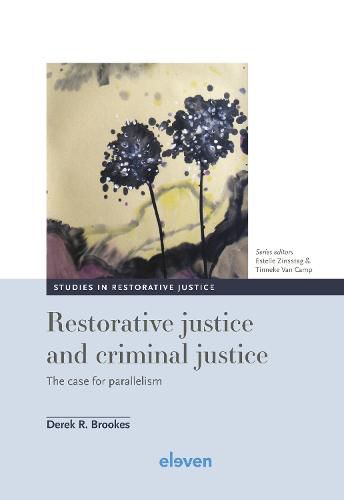Readings Newsletter
Become a Readings Member to make your shopping experience even easier.
Sign in or sign up for free!
You’re not far away from qualifying for FREE standard shipping within Australia
You’ve qualified for FREE standard shipping within Australia
The cart is loading…






This title is printed to order. This book may have been self-published. If so, we cannot guarantee the quality of the content. In the main most books will have gone through the editing process however some may not. We therefore suggest that you be aware of this before ordering this book. If in doubt check either the author or publisher’s details as we are unable to accept any returns unless they are faulty. Please contact us if you have any questions.
Criminal justice is primarily designed to serve the public interest in relation to criminal acts. Restorative justice is designed to address the harm-related needs of individuals in the aftermath of wrongdoing. These distinct aims require such different processes and priorities that any attempt to integrate restorative justice within the criminal justice system will almost invariably undermine the quality and effectiveness of both. In this book, the author argues that the optimal relationship between the two should therefore be one of maximum independence: the instruments of the state should not be used to impose or enforce the decision to participate in restorative justice, any component of the restorative justice process or its outcome. It is also suggested that, in the absence of legislative innovation, this kind of separation is likely to require that restorative justice is situated after a case has actually exited the justice system, or after it has, in legal terms, effectively done so, as in a post-sentence context.
Visit the author's homepage here: https://relationalapproaches.com/parallelism/
$9.00 standard shipping within Australia
FREE standard shipping within Australia for orders over $100.00
Express & International shipping calculated at checkout
This title is printed to order. This book may have been self-published. If so, we cannot guarantee the quality of the content. In the main most books will have gone through the editing process however some may not. We therefore suggest that you be aware of this before ordering this book. If in doubt check either the author or publisher’s details as we are unable to accept any returns unless they are faulty. Please contact us if you have any questions.
Criminal justice is primarily designed to serve the public interest in relation to criminal acts. Restorative justice is designed to address the harm-related needs of individuals in the aftermath of wrongdoing. These distinct aims require such different processes and priorities that any attempt to integrate restorative justice within the criminal justice system will almost invariably undermine the quality and effectiveness of both. In this book, the author argues that the optimal relationship between the two should therefore be one of maximum independence: the instruments of the state should not be used to impose or enforce the decision to participate in restorative justice, any component of the restorative justice process or its outcome. It is also suggested that, in the absence of legislative innovation, this kind of separation is likely to require that restorative justice is situated after a case has actually exited the justice system, or after it has, in legal terms, effectively done so, as in a post-sentence context.
Visit the author's homepage here: https://relationalapproaches.com/parallelism/